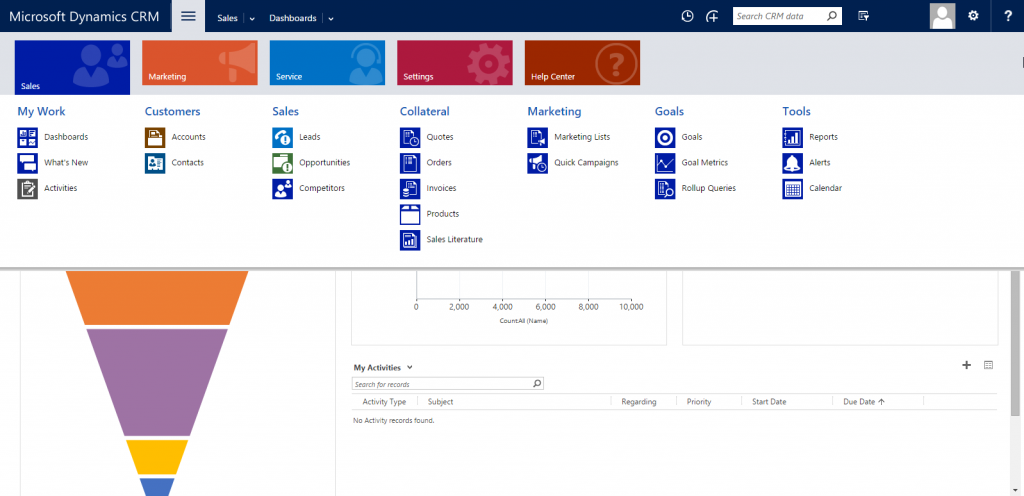The now familiar Microsoft Dynamics CRM system is a product of over a decade’s worth of refining, developing and work; it is continually adapted and manipulated to ensure it is able to outperform itself at every turn. But every solution starts somewhere and the same is true of Microsoft’s (Dynamics) CRM solution…
Insights
Microsoft Dynamics CRM: A history
Microsoft Dynamics CRM 1.0 (2003)
When Microsoft first released their CRM system in 2003, it was named “Microsoft Business Solutions Customer Relationship Management 1.0”… a snappy title soon reduced to CRM 1.0. CRM 1.0’s homepage gave users a quick glance view of open activities, a quick create menu, and a list of various announcement. Along the bottom of the screen, users could navigate between their homepage, workplace (for their work and calendar), the sales and service environments and finally the report environment for metrics and statistics. Initially, CRM 1.0 did not build reports utilizing SQL, instead, it used Crystal Reports which is now marketed to small businesses by SAP SE.
Microsoft’s CRM 1.0 was released in January of 2003 and by December CRM 1.2 was released. CRM 1.2 allowed users easier everyday interaction with the system; customizations could be made and maintained for a more sophisticated user experience and CRM 1.2 integrated with other business systems with the ability to scale to continually support a businesses needs.
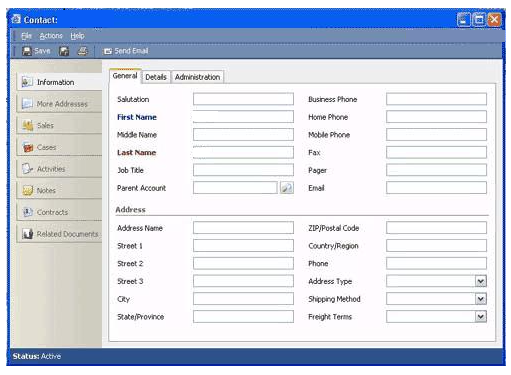
Microsoft Dynamics CRM 3.0 (2005)
In 2005, CRM 3.0 was released (no, you’re not crazy, there is no 2.0…) and was rebranded as Microsoft Dynamics 3.0 to indicate its inclusion in Microsoft’s Dynamics product family. MSCRM 3.0 was promoted as being the CRM solution for small businesses to large enterprises and boasted a powerful suite of marketing, sales and service capabilities; it was sold on its familiarity as well, as it was based around Microsoft Office Word and Outlook and its flexible platform ensured Microsoft were able to give their customers a choice of deployment options.
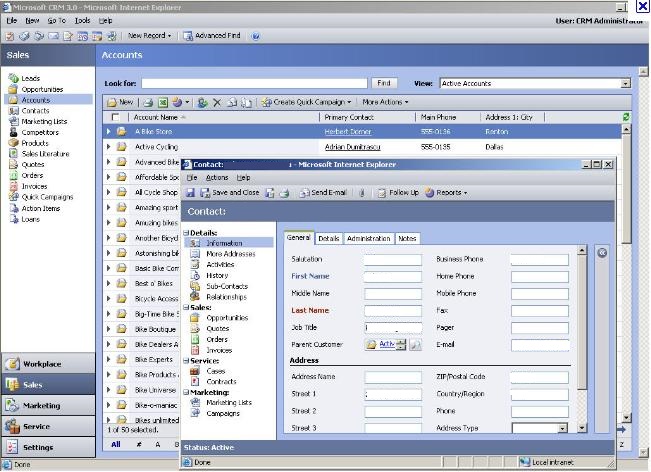
Microsoft Dynamics CRM 4.0 (2007)
In December 2007, Microsoft delivered Microsoft Dynamics CRM 4.0; code-named “Titan”, it promised some pretty special and powerful new features. Improved security, data importing, direct mail merging and in-built support for new operating systems such as Windows 2008 and technologies such as SQL 2008 were just some of the exciting new features available from CRM 4.0. It also saw an advanced new feature becoming utilized to allow multiple customers to access the program via a single server and a multitenant architecture; this is more commonly known as multi-tenancy. It also implemented CRM online.
Microsoft were clearly expanding their deployment geographic in other ways too, as the new CRM 4.0 was released with a choice of more than 25 languages and with support for multiple currencies. “Titan” came with greater business capabilities then its predecessors; including an ad hoc end-user reporting wizard and cross-entity views with advanced business process automations based on Microsoft’s Workflow Foundation from Windows.
Finally, CRM 4.0 had new, advanced collaboration capabilities with Microsoft Office Communications Server 2007 which allowed for real-time presence indicators within the CRM application. Unsurprisingly, MSCRM 4.0 saw the biggest uptake in the market to date and by July 2009 it boasted a staggering 1 million users.
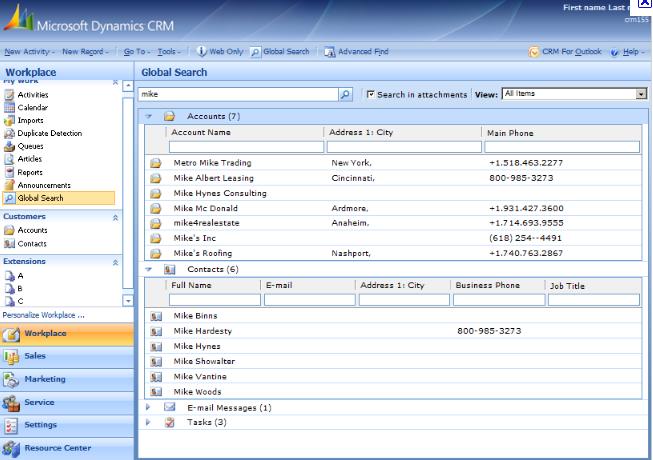
Microsoft Dynamics CRM 2011 (2010)
In February, Microsoft released their third (or fourth, including 1.2) CRM Solution. Microsoft Dynamics CRM 2011 introduced the concept of solutions and solution layers, allowing partners to deliver managed packages of customizations and web resources to be deployed to customers much like you would deploy an App on your phone. CRM 2011 had another, more visible, change; the introduction of dashboards allowed users to summarize the data they put into their CRM systems and display it in real time giving them a 360 degree view of any area of their business.
The ribbon, more familiar in the Office environment, was also an addition to CRM 2011, allowing a more fluid transition between environments within the system. Not long after it was released Microsoft announced they would begin to take a more agile approach to their CRM product development; updates were planned to be released twice a year, as opposed to the original 2-3 year release cycle more common for business software.
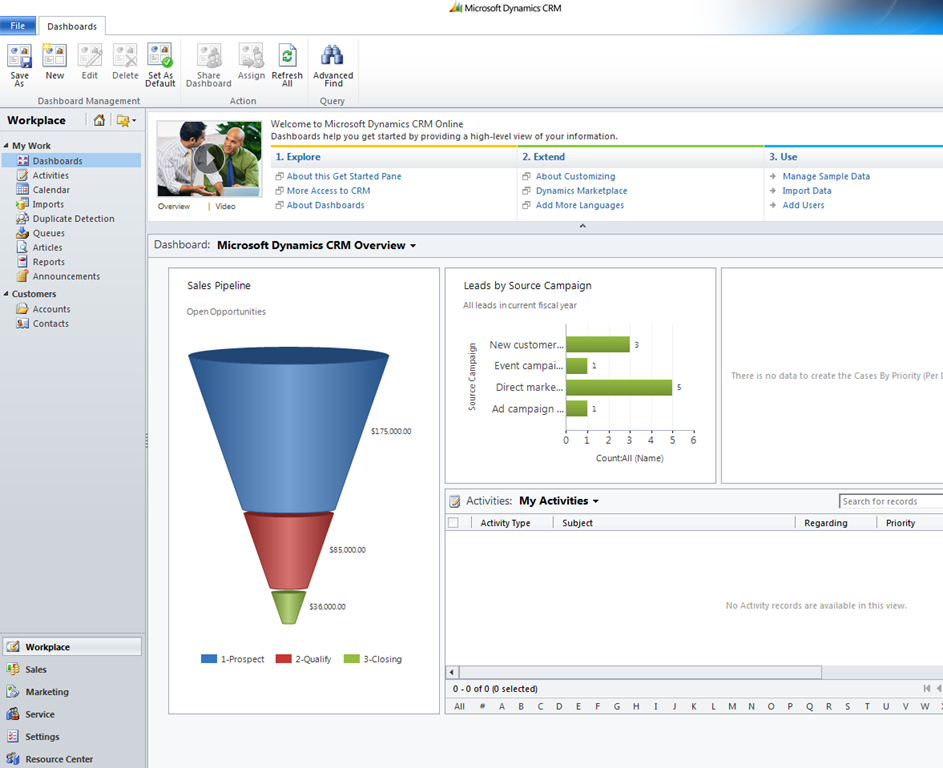
Microsoft Dynamics CRM 2013 (2013)
Microsoft released Microsoft Dynamics CRM 2013 with their eyes firmly on the future. As we all know, 2013 did not see businesses solely driven with us all sitting at our desks working from PCs and the mobile workforce wanted access to their “desks” on the go; Microsoft Dynamics CRM 2013 includes clients not only for any browser and any computer running Outlook, but also tablet devices powered by Windows 8 and iOS, smartphones running Windows Phone 8, Android or iOS, and any other obscure devices that can access the updated Mobile Express web client.
The display was also cleaner and more streamlined, allowing for a smoother and more user friendly experience, with a huge reduction on pop-ups… No-one ever really liked pop-ups anyway. Two more exciting additions to MSCRM 2013’s repertoire were Server-side synchronization and Business process flow forms, which came combined with new capabilities that allowed customizations to be performed by users that would previously have required plug-ins; these were called business rules and real-time workflows.

Microsoft Dynamics CRM 2015 (2014)
The most recent CRM product from Microsoft is Microsoft Dynamics CRM 2015; released in the fourth quarter of 2014, the new version boasts an immersed Excel experience, embedded OneNote, Social Engagement and stronger, more dynamic marketing abilities.
